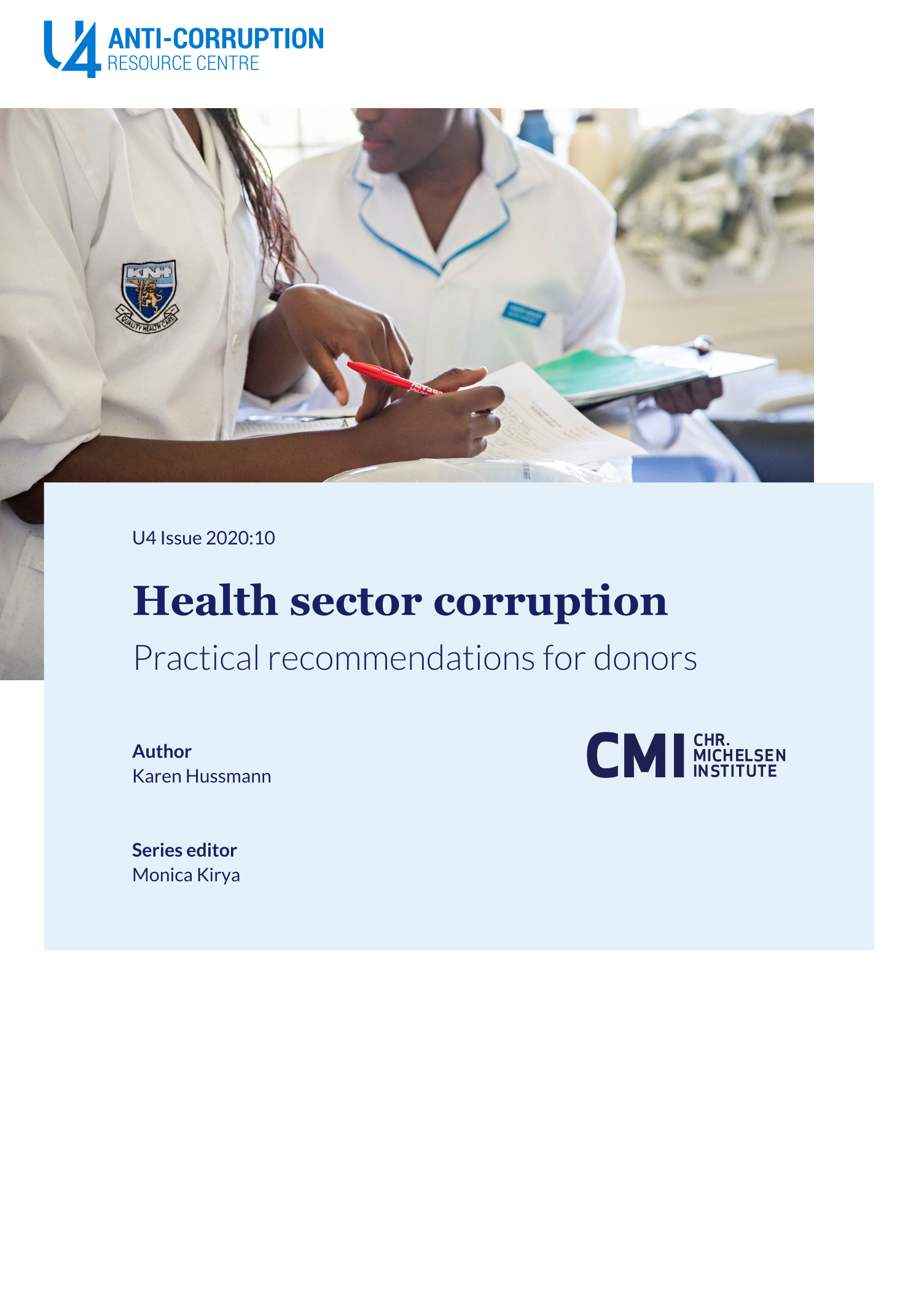Main points
- Health systems are particularly susceptible to corruption due to large amounts of resources, information asymmetry, the large number of actors, system complexity and fragmentation, and the globalised nature of the supply chain for drugs and medical devices.
- An array of tools help diagnose the problem and generate buy-in for anti-corruption measures, but most tools do not assess high-level sector corruption or state capture. A combination of different tools will be useful, and the support of donors for this is essential.
- Anti-corruption initiatives in the health sector seem to be targeted at either specific problems, processes, or institutions. More holistic, strategic, and medium- to long-term initiatives seem to be rare. It is not clear to what extent capture of health regulatory and oversight agencies is addressed, if at all.
- A number of international initiatives have been created for the pharmaceutical sub-sector and health related procurement, as well as specific risk areas, such as of transparency in drug pricing and clinical trials.
- The tools used are often normative and prescriptive, and usually do not adequately capture the complex dynamics that lead to corrupt behaviour.
- Surprisingly, documented evidence on outcomes of anti-corruption initiatives in the health sector is patchy – with mostly unknown impact.
- Social accountability tools, however, show promise for reducing corruption in health service delivery.
- At the international level, donors could foster linkages of the three Sustainable Development Goals (3, 16, 17) that contain commitments to addressing health sector corruption with health sector initiatives, multi-stakeholder initiatives on corruption and health, as well as research and learning.
- At the national level, donors should support long-term, strategic approaches to integrity in the health sector based on a sound understanding of sector dynamics and the various actors’ roles – focusing both on corruption in service delivery as well as regulatory and institutional integrity.
- Finally, donors could strengthen their internal structures and processes by fostering interactions between health and governance teams, including an integrity lens in new health programmes, and strengthening donor coordination on corruption in health.



